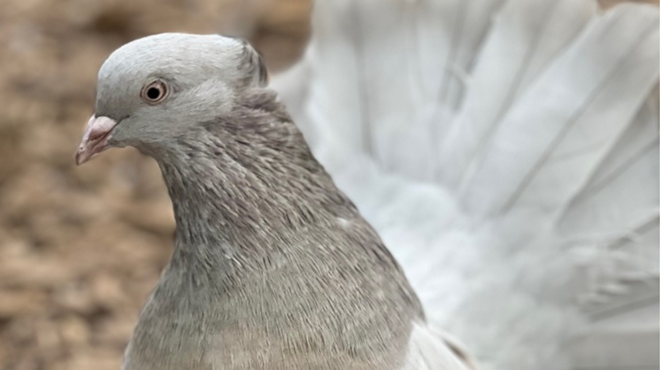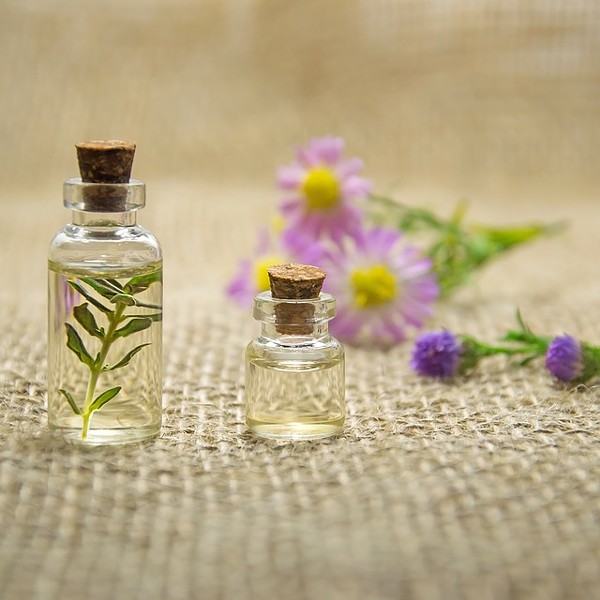Gentle. Peaceful. Joyful. That's the spirit of the three nature-inspired wellness modalities that I've had the good fortune to explore this summer. Each one is an invitation to greater ease and calm, and a reminder that the simplest elements of nature are some of our most powerful health allies. Forest bathing is where nature and mindfulness meet, clearing the mind, opening the senses, and sending stress packing. Flower elixirs offer a fragrant way to relieve our afflictions and help us blossom into our fully realized selves. And salt therapy is the beach brought indoors—a crystalized health salve that bids you to breathe deep. All three pursuits are in vogue just now (Saks Fifth Avenue in New York City recently opened a mini salt room to lure shoppers). Consider this a Whitman's sampler of soft therapies designed to root you in nature and plant the seeds of wellbeing...just before summer slips away.
In the Forest, a Trail of Wonder
One recent day at Mohonk Mountain House in New Paltz, along the edge of a woodland path, I crouch to peer into the smiling face of a small white daisy. Time holds its breath as my eyes trace the petals. Next to me—modeling pure, unmediated absorption in the flower and all its floweriness—is Nina Smiley, PhD, Director of Mindfulness Programming at the Victorian-castle resort and coauthor with her brother David Harp of Mindfulness in Nature (Hatherleigh Press, 2017) and The Three Minute Meditator (minds i press, 2007). It crosses my mind that the two of us might look very odd to passersby en route to the tennis courts or horse stables. But Smiley draws my attention back to the flower with a kind of unapologetic devotion—the very essence of forest bathing.
"'Forest bathing' is from the Japanese phrase shinrin-yoku, which is 'immersion in nature' or 'taking in the forest atmosphere,'" says Smiley, whose husband is the great grand-nephew of Albert Smiley, the founder of Mohonk Mountain House. "It's about adding the power of mindfulness to a slow, gentle walk in the woods. The focus is on being fully aware of your senses and clearing the mind of thoughts, which allows you to be present in a deep and healing way."
Smiley is quick to qualify that forest bathing is something you do fully clothed (no soap required). It is not a nature walk in which you reference the names of trees and wildflowers. Nor is it a walking meditation with a focus on each slow step. Rather, forest bathing happens at an even slower pace and calls upon all five senses—with plenty of room to dedicate your awareness to anything that crosses your path. After the encounter with the daisy, Smiley and I zoom in on a centipede, a shrub's sticky seedpods, and the shimmer of wind on water. At one point, we spend several minutes by a tree, running our hands over the moss and lichen that cling to its bark. (Again, my mind wanders: Are we really petting a tree? Yes, we are petting a tree. But thoughts like this are exactly what we wish to quiet while forest bathing.)
Tree stroking aside, forest bathing has science behind it. "The practice was introduced in Japan in the early 1980s, when scientists called out the therapeutic effect of spending time in forests," says Smiley. "Research documented reduced stress, lower blood pressure, and an enhanced immune system." More recently, a small study in 2009 homed in on phytoncides—the antimicrobial organic compounds that plants and trees emit. Breathing in phytoncides, the study found, reduced stress hormone levels and increased the activity of immune-boosting natural killer cells for more than seven days after trips to the forest in both male and female subjects. When we inhale what the forest exhales, we can't help but benefit.
Mohonk Mountain House, with its 85 miles of trails, is not the only place to forest bathe. Smiley points out that you can do it in your own backyard—and that we need practices like this more than ever. "There's an edge of uncertainty and increased stress right now, because it feels like our culture is moving fast-forward into increased fragmentation," she says. "We need ways to calm, center, and find resilience. I think we crave the spaciousness, clarity, and simplicity that come with mindfulness practices like forest bathing."
Propagating Joy with Flower Elixirs
Whether you want to have more creativity and focus, sleep better, or improve your relationships, Katie Hess has a flower for you. Her company, Lotus Wei, produces flower elixirs made with everything from jasmine and water lilies to rare orchids—each aligned with a healing purpose or activating agent of change. "Our mission and joy is to seek out the flowers from amazing places around the world that people can most benefit from today," says Hess. On collection trips to places from Minneapolis to Seattle, and in Iceland, British Columbia, and Ireland, she and her team gather wild blooming flowers, steep them like sun tea, and craft the essences into honey-sweetened elixirs, aura mists, and multi-flower elixir blends with names like Boundless Wisdom, Wild Abundance, and Inspired Action. Each drop is akin to nectar, putting you in the company of butterflies and bees.














